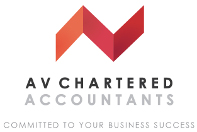Blogs

End of Year Tax Planning Tips for Business - 7th June 2017
The
general rule is that you can claim deductions for expenses your business incurs
in its task of generating assessable income. Many of these deductions are
obvious - rent, materials, supplies and so on - but there are also some less
obvious options left available just before the end of the income year, should
your circumstances suit, to further reduce your enterprise's tax burden for the
year.
Pay tomorrow's expense today
If your business has taken out a
loan, any interest accrued but not physically paid by June 30 is potentially
deductible (the crucial factor of course being that the loan was used to
produce assessable income, which most business loans are) - assuming that the
business accounts for tax on an accruals basis. In a similar vein, see if you
can negotiate with your finance provider to make upfront interest repayments - that is, they may not be "due" until after July 1, but the finance provider
will accept them before then.
In a related tip, it is
a fact of life that many sole traders fund some business activities through
their personal credit card or a personal loan. Because the interest costs are
not being incurred under the business name, but in the name of the business
owner, many operators have unfortunately assumed that a deduction cannot be
claimed.
But
remember - a sole trader's business and non-business activities are all dealt
with under the taxpayer's personal income for tax purposes. So qualifying
business expenses will be deductible even if you used your personal credit card
instead of your business one.
Silk purse from a sow's ear
Another unfortunately not
uncommon fact of business life is that some amounts owed to you sitting on the
balance sheet are not likely to ever be paid. Now is the best time of year to
re-consider these amounts, and decide if any are legitimate bad debts, and
therefore able to be written off and be transformed into a tax deduction.
To this end, it could pay to go
back through your outstanding invoices to find potential bad debt candidates
and write them off before June 30. However the ATO has rules regarding bad debt
deductions - call our office for more details.
Capital gain shuffle
Capital
losses can be offset against, and therefore reduce, taxable capital gains that
you may make on selling other assets. So if your business is due to sell some
assets that will realise a capital loss, try to crystallise these losses before
June 30.
If
however the sale will produce a capital gain, delay crystallising this gain
until the 2017-18 income year so that you will have a full fiscal year to get
in place options to offset that gain with capital losses or revenue expenses.
It may even be worthwhile for you to sell an underperforming asset, and realise
a loss, if this suits your CGT circumstances.
And
remember, as a general rule the "CGT event" for a disposal occurs at contract
date - this could help in your planning if you sell an asset where settlement
and/or payment takes place in 2017-18 but the contract is executed in 2016-17.
Trading stock isn't always standard
Taking into account the changed
value of your trading stock over an income year can affect the resulting
taxable income. But as you can have a choice of how that valuation is arrived
at - that is, cost, market selling, or replacement value (or even a lower value
due to obsolescence) - the end result may allow you to either bring forward
deductions or alternatively increase taxable income if you have sufficient
deductions to use up for the 2016-17 year.
And remember, each item of trading
stock can be valued differently for tax purposes. Ask for our help should you
need guidance.
Appreciate depreciation
Getting a tax deduction for the
wear and tear and loss of value on business assets that are used to derive
assessable income is a stalwart of the business tax regime, so a review of your
enterprise's depreciation schedule is always prudent. Any number of
opportunities can be discovered, including the ability to scrap and write-off
amounts of redundant assets, reassess remaining effective lives, or allocate
assets to a low value pool.
This is important for this and
next tax year as the $20,000 instant asset write-off has been extended until
June 30, 2018 (subject to legislation passing). It will thereafter revert to
$1,000 (notwithstanding possible further changes in next year's Federal Budget).
A bonus from staff bonuses
Businesses that account for tax
on an accruals basis are entitled to claim a tax deduction for an expense in
the year in which the business has committed to the liability. If you have
committed to pay employees end-of-year bonuses, the accrued expense can be
claimed as a tax deduction even though it is physically paid next financial
year.
A company can also claim director
bonuses in the year the expense is accrued in the same way (directors are
classified as employees). For a company to claim a deduction for a director or
employee bonus without physically paying the money, the company must, before
the end of the financial year, commit to the payment of a specific amount. The
amount need not be quantified but the calculation methodology must be fixed
(for example, a formula based on profits or revenue amounts yet to be
finalised). The commitment should be documented (such as minutes of a
directors' meeting).
Soak up those losses
There may be a case to offset
prior year losses against current year income, however for companies and trusts
the ability to do so can be subject to certain conditions (the carry forward
loss rules). These include the continuity of ownership test and the same
business test for a company.
See our blog What is a tax loss, and how
can it be turned to good use? Consult with us should this seem applicable.
Remember the concessions
Parliament has finally passed most of the business tax relief package announced in the last Federal Budget, but with some amendments. The legislation brings into effect the following changes for SME businesses:
Progressive cuts to the company tax rate:
- The tax rate will be progressively reduced to 27.5% from 2016-17 to 2018-19 for companies that are carrying on a business and have an aggregated turnover of less than $50 million.
- The 27.5% rate for those entities will be progressively cut to 25% by 2026-27.
- The aggregated turnover threshold for access to most small business tax concessions will be $10 million, with the exception of the below concessions.
- The threshold for the small business CGT concessions will remain at $2 million.
And finally a reminder that the
small business income tax offset rate for unincorporated enterprises for
2016-17 has gone up to 8%, and will stay at that rate until 2023-24. It will
then double to 16% by 2026-27 (the offset will remain capped at $1,000 a year
however).
A summary of concessions available for small business and eligible thresholds is as follows (from July 1, 2016):
|
Aggregated annual turnover |
$20,000 instant asset write-off |
Small business CGT concessions |
Small business restructure roll-over |
Company tax cuts |
Small business income tax offset |
Small business pool |
Immediate deduction for certain start-up costs |
|
< $2m |
Yes |
Yes |
Yes |
Yes |
Yes |
Yes |
Yes |
|
< $5m |
Yes |
No |
Yes |
Yes |
Yes |
Yes |
Yes |
|
< $10m |
Yes |
No |
Yes |
Yes |
No |
Yes |
Yes |
AV Chartered Accountants - Committed to Your Business Success
Now in two convenient locations:












